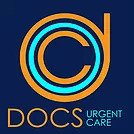When it’s time to part ways with your current healthcare provider, finding a primary care doctor in Bridgeport, CT, can seem daunting. Whether you’re new to the area or simply seeking a fresh start in your healthcare journey, these five essential tips will guide you in your quest for your new primary care doctor in Bridgeport, CT.
1. Ask For Recommendations
One of the best ways to start your search for a new primary care doctor in Bridgeport, CT, is by seeking recommendations from trusted sources. Reach out to friends, family, coworkers, or neighbors in the area. They can provide valuable insights based on their own experiences, helping you compile a list of potential healthcare partners.
Here are trusted resources you can ask for recommendations from when looking for a new primary care physician in Bridgeport, CT:
✔️ Friends and Family
Your trusted inner circle of friends and family living in Bridgeport, CT, can be an invaluable resource when seeking recommendations for a new primary care physician. These individuals often share their healthcare experiences candidly. They can provide insights into the doctor’s bedside manner, communication skills, and overall approach to patient care. Their recommendations are personal, helping you gauge the doctor’s medical expertise and ability to establish rapport and trust with patients.
✔️ Coworkers and Neighbors
Colleagues at your workplace or neighbors in your local community can offer valuable recommendations for a new primary care doctor. They have a unique perspective, often possessing local insights into the healthcare landscape. Some may have already established relationships with primary care doctors in Bridgeport, CT, and can share their experiences regarding the quality of care, convenience of the location, and the doctor’s responsiveness to patient needs.
✔️ Online Reviews
In today’s digital age, online review platforms have become indispensable resources for individuals searching for a new primary care doctor in Bridgeport, CT. Websites like Yelp, Healthgrades, and Google Reviews feature comprehensive patient feedback and ratings for healthcare providers, including primary care doctors. Reading these reviews provides you with a broader range of perspectives and experiences. Look for patterns in the reviews, paying attention to recurring positive comments or concerns raised by multiple patients.
✔️ Healthcare Forums and Social Media
Online healthcare forums and social media groups specific to Bridgeport, CT, create virtual spaces where residents openly share their healthcare experiences and recommendations. Engaging with these online communities allows you to tap into firsthand information. Residents often discuss various aspects of healthcare, including primary care doctors, and may offer personal anecdotes about their encounters with specific providers.
✔️ Your Current Healthcare Provider
Even if you’re transitioning from your old primary care doctor, it’s worth maintaining open communication with your current healthcare provider. They are vested in ensuring you receive quality care, even under a different provider. They may have professional connections and be part of a larger healthcare network, enabling them to guide you to a reputable primary care doctor in Bridgeport, CT, who aligns with your healthcare needs and preferences.
2. Check Your Insurance
Before scheduling an appointment, it’s crucial to ensure that your new primary care doctor in Bridgeport, CT, accepts your health insurance plan.
Here are steps in leveraging your insurance to find your new primary care doctor in Bridgeport, CT:
✔️ Contact Your Insurance Provider
Initiating your search for a new primary care doctor in Bridgeport, CT, begins with contacting your health insurance provider. You can find their contact details on your insurance card or their official website. Whether you prefer speaking to a representative or using online tools, your insurance company can provide valuable information about doctors and healthcare facilities within your network. They typically maintain up-to-date directories of in-network providers, simplifying the process of identifying primary care doctors who accept your insurance. By contacting your insurance provider, you’re taking the first step towards ensuring that your medical expenses are covered as you establish care with your new primary care doctor.
✔️ Consider Cost and Coverage
As you check your insurance, it’s crucial to consider your plan’s cost and coverage aspects. Understanding your financial responsibilities, such as copayments or coinsurance rates for in-network primary care visits, is essential for effective financial planning. Additionally, it’s wise to ascertain whether your insurance plan necessitates a referral from a primary care physician to access specialized care. This referral requirement can influence your ability to receive specialized medical attention in the future. Considering these cost and coverage elements, you can make informed decisions about your healthcare while staying within your budget.
✔️ Explore Telehealth Options
Telehealth has gained significant popularity in recent years, offering patients the convenience of remote medical care. Check whether your insurance coverage includes telehealth visits to make the most of your insurance plan and enhance your healthcare experience. Furthermore, investigate whether the primary care doctor you’re considering offers telehealth consultations. Telehealth can be a particularly valuable option for routine check-ups and follow-up appointments, allowing you to access care conveniently, especially in Bridgeport, CT’s busy healthcare landscape.
✔️ Confirm Changes
If you’ve recently made changes to your insurance plan or switched providers, it’s crucial to confirm that your chosen primary care doctor in Bridgeport, CT, remains in-network. Insurance networks can evolve, and providers may join or leave networks over time. Therefore, it’s essential to periodically verify your coverage, especially during open enrollment periods or when adjusting your insurance plan. Confirming that your selected doctor remains in-network ensures seamless access to care without unexpected out-of-pocket expenses.
3. Specify the Clinical Expertise You Need
Consider any specific medical needs or conditions you have when searching for your new primary care doctor in Bridgeport, CT. If you have a chronic condition, require specialized care, or have unique healthcare preferences, seek the right doctor from clinics such as Docs Primary Care – Bridgeport. Not all primary care doctors offer the same services, so specifying your needs can help you find the right match.
Here are the subclasses of medicine your new primary care doctor in Bridgeport, CT, may specialize in:
✔️ Internal Medicine
An internist can be an excellent choice when seeking your primary care doctor in Bridgeport, CT. These specialists focus on adult healthcare and have extensive training in diagnosing and managing various medical conditions. Whether dealing with complex health issues or requiring comprehensive primary care, an internist can provide expert guidance and tailored treatment plans. They are known for their ability to handle intricate medical cases and offer personalized healthcare solutions, making them a valuable partner in managing your health.
✔️ Family Medicine
For a primary care doctor in Bridgeport, CT, who can cater to the healthcare needs of your entire family, consider a family physician. These doctors are trained to provide primary care services to individuals of all ages, from newborns to seniors. They offer a holistic approach to healthcare and emphasize preventive medicine. Choosing a family medicine practitioner ensures that your family receives consistent and comprehensive healthcare under one healthcare provider, simplifying your medical journey.
✔️ Pediatrics
If you have young family members or need specialized care for children, a pediatric primary care doctor in Bridgeport, CT, is the ideal choice. Pediatricians specialize in the health and well-being of infants, children, and adolescents. They deeply understand pediatric healthcare needs and focus on preventive care, developmental milestones, and childhood illnesses. A pediatric primary care doctor can provide a child-friendly and nurturing healthcare environment, promoting the health and growth of your little ones.
✔️ Geriatrics
A geriatrician is the optimal choice for seniors in Bridgeport, CT, seeking a primary care doctor with expertise in addressing age-related healthcare concerns. Geriatricians specialize in the unique healthcare needs of older adults, emphasizing preventive care, managing chronic conditions, and enhancing the quality of life for seniors. They have a comprehensive understanding of age-related conditions and are skilled in providing compassionate and patient-centered care, making them essential healthcare partners for seniors in the community.
✔️ Obstetrics and Gynecology (OB/GYN)
Women seeking comprehensive and specialized healthcare in Bridgeport, CT, should consider an OB/GYN as their primary care doctor. OB/GYNs focus on women’s health, including reproductive health, pregnancy, childbirth, and gynecological conditions. They offer various services, from routine check-ups to family planning and menopause management. Choosing an OB/GYN as your primary care doctor in Bridgeport, CT, ensures that you receive tailored healthcare that addresses your specific needs and concerns, empowering you to prioritize your well-being.
4. Address Logistical Concerns
When choosing a primary care doctor in Bridgeport, CT, addressing logistical concerns can significantly enhance your overall healthcare experience. Opting for a logistically convenient primary care doctor in Bridgeport, CT, can make routine check-ups and medical visits more accessible, saving time and effort.
Here are logistical concerts that you should address when looking for a new primary care doctor in Bridgeport, CT:
✔️ Location and Accessibility
The location of your primary care doctor’s practice is a crucial logistical consideration. Choosing a doctor with an office near your home or workplace in Bridgeport, CT, can significantly impact your healthcare experience. It ensures that medical care is easily accessible, reducing travel times and making it more likely that you’ll seek timely care when needed. A conveniently located primary care practice can be a cornerstone of your overall well-being, as it promotes regular check-ups and prompt attention to health concerns.
✔️ Office Hours and Availability
Your primary care doctor’s office hours and availability in Bridgeport, CT, play a pivotal role in your ability to access healthcare. It’s essential to align the doctor’s schedule with your own to secure appointments at times that suit you. Some primary care doctors offer extended hours or weekend appointments, catering to individuals with demanding schedules. Easy access to appointments ensures that you can seek medical care promptly, fostering a proactive approach to your health.
✔️ Appointment Scheduling
Efficient and convenient appointment scheduling is another logistical concern when choosing your primary care doctor in Bridgeport, CT. Some doctors offer online appointment booking systems, simplifying securing a visit. Moreover, shorter wait times for appointments indicate better access to care, ensuring that you can see your primary care doctor when needed without experiencing prolonged delays. Streamlined appointment scheduling contributes to a smoother healthcare experience.
✔️ Affordability
Financial considerations are a fundamental aspect of healthcare. When selecting your primary care doctor in Bridgeport, CT, confirming that they accept your health insurance plan is essential. This helps minimize out-of-pocket expenses and ensures that your healthcare is financially manageable. Understanding your insurance coverage, including copayments, deductibles, and potential additional costs, enables you to plan for your healthcare expenses effectively. Affordable healthcare access is a cornerstone of your well-being and peace of mind.
5. Make a Visit
Once you’ve narrowed your list of potential candidates for your new primary care doctor in Bridgeport, CT, don’t hesitate to schedule an initial visit. This visit is crucial in assessing the doctor’s bedside manner, communication skills, and overall comfort level. It’s also an opportunity to discuss your medical history, specific concerns or preferences and gauge how well the doctor listens and responds to your needs.
Here are some key factors you must establish with your new primary care doctor in Bridgeport, CT, during the first appointment:
Assess Comfort and Compatibility
When you visit your new primary care doctor in Bridgeport, CT, for the first time, the focus goes beyond medical expertise. It’s about building a trusting partnership. During this initial meeting, observe your comfort in the doctor’s presence. Pay attention to their bedside manner, which includes their demeanor, empathy, and communication style. A compassionate and empathetic doctor who listens to your concerns, such as those from Docs Primary Care – Bridgeport, can make a difference in your healthcare journey. Feeling at ease with your new primary care doctor is vital as it encourages open dialogue and fosters a positive doctor-patient relationship, enhancing your overall healthcare experience.
Discuss Medical History
Your medical history is the foundation of your healthcare, and the initial visit is an ideal opportunity to share this essential information with your new primary care doctor in Bridgeport, CT. Discuss any chronic conditions, allergies, past surgeries, and current medications. This comprehensive medical history empowers your doctor to make well-informed decisions about your care. It also helps identify potential risk factors or health issues requiring preventive measures. Sharing this information honestly and thoroughly is crucial for personalized and effective healthcare.
Ask Questions
An integral aspect of effective healthcare is your ability to ask questions and seek clarity on various health-related matters. During your initial visit with your new primary care doctor, don’t hesitate to inquire about anything that concerns you. Ask about their approach to healthcare, preventive measures, and their recommendations for your specific situation. A healthcare provider who welcomes and patiently answers your questions demonstrates a patient-centered approach, ensuring you are well-informed and actively engaged in your healthcare decisions.
Review Your Health Goals
Your health and wellness goals are unique to you. Whether you’re focused on weight management, disease prevention, or managing a chronic condition, it’s crucial that your primary care doctor in Bridgeport, CT, supports and collaborates with you to achieve these objectives. During your initial appointment, discuss your health goals openly. Your doctor should acknowledge your aspirations and work with you to develop a personalized healthcare plan that aligns with your objectives. This collaborative approach empowers you to take an active role in your health and ensures that your care is tailored to your needs.
Evaluate Office Environment
The environment in which you receive healthcare plays a significant role in your overall experience. Take a moment to assess the office environment during your first visit to your new primary care doctor in Bridgeport, CT. Consider factors such as cleanliness, organization, and the friendliness of the staff. A well-maintained and welcoming office can contribute to a positive healthcare experience. It reflects the doctor’s commitment to providing quality care and ensures you feel comfortable and respected throughout your visits. A positive office environment can enhance your overall satisfaction with your healthcare provider.
Find the Perfect Partner in Health—Your Primary Care Doctor in Bridgeport, CT, Awaits!
Finding a primary care doctor in Bridgeport, CT, may initially feel challenging, but with these tips, you’ll be well-prepared to make a thoughtful and informed decision for your healthcare journey. Remember that your primary care doctor in Bridgeport, CT, plays a pivotal role in your overall well-being, so take your time to find the right fit for your needs and preferences.
Experience a revolution in healthcare with Docs Primary Care – Bridgeport! Our cutting-edge telemedicine platform connects you with top-notch doctors in Bridgeport, CT, from the comfort of your home. Say goodbye to long wait times and hello to convenience. Whether you need a routine check-up, have a pressing health concern, or seek expert medical advice, our network of skilled physicians is just a click away.
Join the Docs Primary Care – Bridgeport community today and take control of your health. Your well-being is just a call to action away – schedule your first virtual appointment now!




















